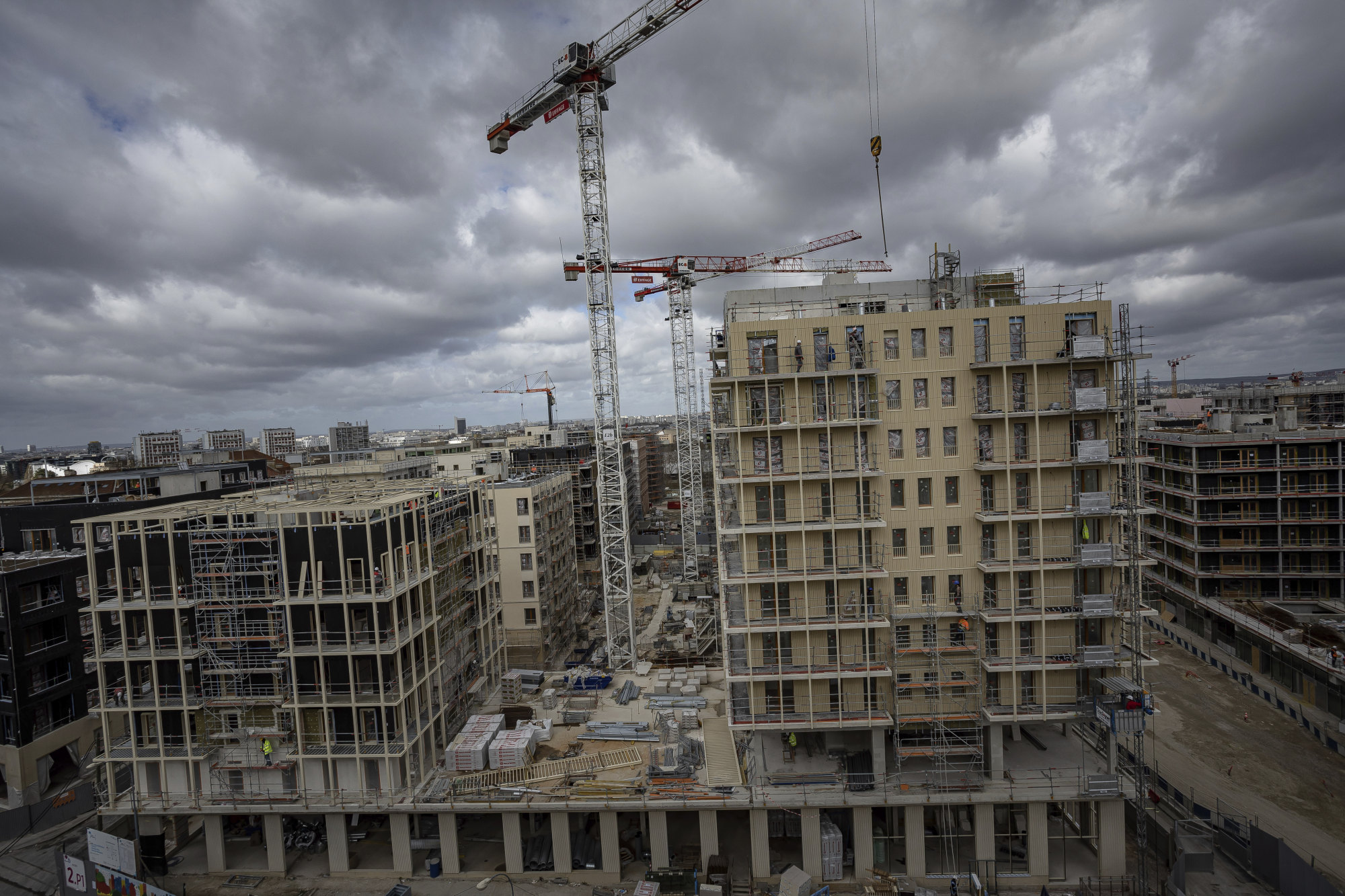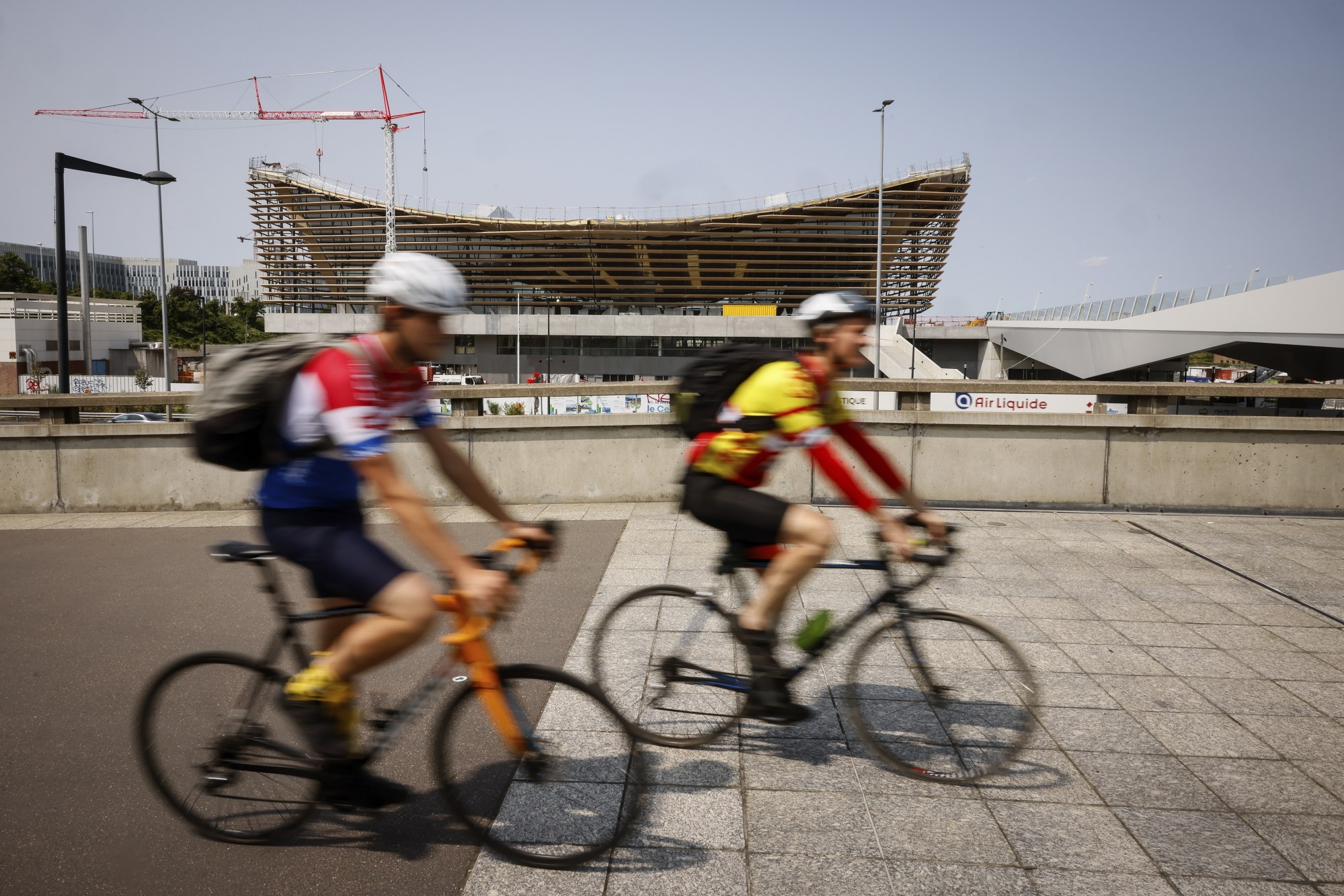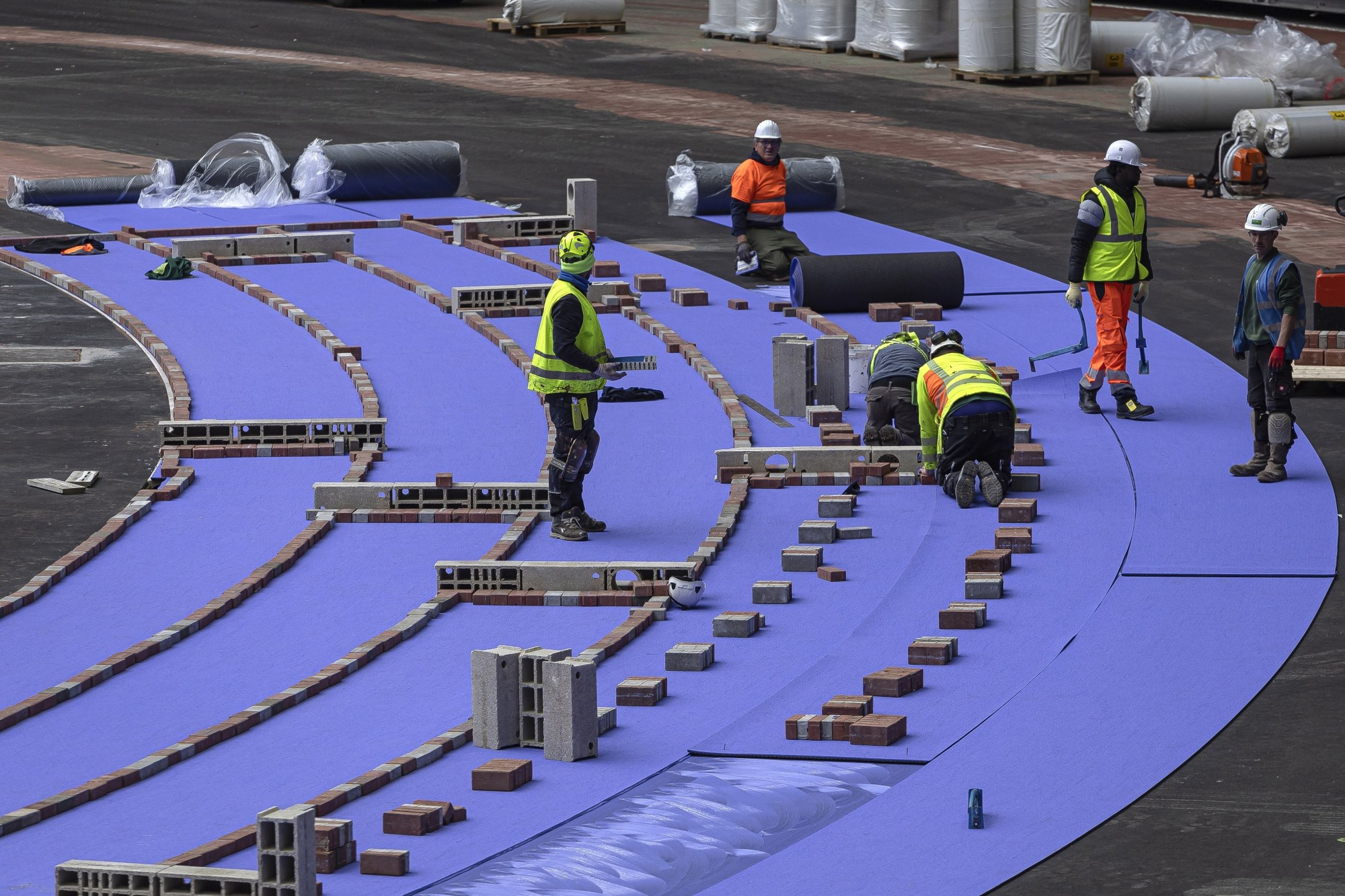How 2024 Paris Olympics organisers are planning for the most sustainable Games yet, and why not everyone is satisfied
Of all the decisions Paris Olympics organisers made about where to hold each sport, sending surfing competitions to the other side of the world – to the Pacific waters of Tahiti – provoked the strongest reactions.
Tahitians and others railed against the building of a viewing tower on Teahupo’o reef amid fears it would damage marine life.
But organisers say it was not just the world-class waves that lured them to the French territory 16,000km (10,000 miles) away.
Paris Olympic officials had set an ambitious target of halving their overall carbon footprint compared with the 2012 London and 2016 Rio de Janeiro Games.

Tahiti’s surfing reef is too far offshore for fans to see the action clearly from the beach, so organisers are calculating that most will watch on television instead of taking flights – which are a major source of carbon emissions.
And fewer spectators, they say, requires little new construction – another significant source of emissions.

“We actually did the maths,” says Georgina Grenon, director of environmental excellence for the Paris Games. “There was less impact in Tahiti compared to other metropolitan areas.”
Tahiti’s selection provides a window into the approach by Games organisers to hitting their goal of reducing emissions, the driver of climate change.
It also underscores an inherent tension in the drive for sustainability: there are trade-offs, and reducing emissions does not necessarily mean preserving the environment.
The organisers’ goal is to limit emissions to 1.58 million metric tons of CO2 equivalent for the Games, which will take place from July 26 to August 11, and the Paralympics that will follow.
That is still a lot of pollution – equal to that of about 1.3 million economy-class passengers flying one way from New York to Paris on Boeing 787 jets, according to climate and sustainability consultancy myclimate.
Maybe things like the Olympics have to be reconsidered. Having millions of people congregate in a single area is a very intensive thing
It is a lot less, however, than the footprints of previous Games.
Organisers say they are thinking about the Games’ future, not just the planet’s. Fewer cities are volunteering to spend billions on infrastructure that sometimes falls into disuse.
Paris and Los Angeles – who will host the Games in 2028 – were the only cities left in the race when picked in 2017. For organisers, hosting less wasteful Games is key to rekindling their appeal, along with adding more inclusive, youth-oriented events such as skateboarding.
Paris is under additional pressure to be a sustainable model: the city hosted the 2015 United Nations climate talks that resulted in the Paris Agreement, the most significant international climate accord to date.
Delegates agreed the world should limit the average global temperature to 2 degrees Celsius (3.6 Fahrenheit) above that in the 1850s, and ideally cap it at 1.5 degrees Celsius above – a goal that is looking increasingly unattainable.
Independent experts say Paris appears to be decarbonising in the systematic ways businesses do: by calculating total emissions, then cutting through myriad small CO2 savings that add up.
Organisers targeted reductions across three categories: construction, transport and operations.

“They seem to be taking a very thoughtful approach,” says Adam Braun, of Clarasight, which builds carbon-planning software for companies. “They are trying to do something that is indicative of how many organisations will be holding themselves accountable.”
The biggest break from previous Games is in construction. Organisers say 95 per cent of facilities are existing or will be temporary.
Two new structures were deemed unavoidable: the Olympic Village, which will house athletes and later become housing and office space, and the Aquatics Centre, in Paris’ disadvantaged northern suburbs.
Using wood, low-carbon cement and salvaged materials helped reduce emissions by 30 per cent compared with traditional methods, Grenon says.
Reductions in operations include food. The average meal in France – restaurant or home-prepared – produces about 2kg (4.4 pounds) of CO2, says Philipp Würz, the Games’ catering head.
Paris aims to halve that by sourcing 80 per cent of ingredients locally, cutting transport emissions and offering spectators 60 per cent plant-based foods.

Winning minds as well as taste buds could take work.
“Locally grown food, and supporting local farmers, are beautiful things,” tennis player Victoria Azarenka says. But “when people are doing these big gestures, I’m not fully convinced of the impact”.
Another emissions-savings source is energy, which will represent only 1 per cent of emissions, organisers say. They intend to use 100 per cent renewable power from wind and solar farms, plus solar panels at some venues.
Stadiums and temporary venues will get power from the grid instead of diesel generators, which produce a lot of CO2. Giant electrical plugs at venues will remain after the Games, removing the need for generators at future events.
Reducing transport-related emissions is arguably Paris’ biggest challenge. Tourism officials expect 15.3 million visitors for the Olympics and Paralympics, including 1.9 million from outside France, with at least 850,000 taking long-haul flights.
In Paris, there are low-carbon transport options – cycling routes, Metro trains, buses and other public transport – to all venues.

But the inability to control how people get to the Olympics, or any big event, raises questions about whether humanity can afford such get-togethers at the cost of further climate damage.
“Maybe things like the Olympics have to be reconsidered,” says Seth Warren Rose of the Eneref Institute, an advocacy and research group focused on sustainable development. “Having millions of people congregate in a single area is a very intensive thing.”
Rose says organisers’ efforts are laudable, but they should have gone further – reducing emissions beyond half and finding more ways to make sustainability a central fan experience.
Some critics have also questioned some sponsors. Air France, ports operator CMA CGM Group and metals giant ArcelorMittal are leaders in carbon-intensive industries. On their websites, all tout their Olympic sponsorship and sustainability efforts.
The Upright Project, a Finnish company that evaluates companies’ impact on the world, looked at sponsors, assigning scores for positive and negative impacts on the environment, health, jobs and other metrics.
It found that sponsors’ emissions had an overall 10-fold negative impact on the environment.

“I do find the current sustainability discourse, where we effectively celebrate companies’ minuscule sustainability tweaks and greenwashing efforts like they actually make a difference to climate change, extremely harmful,” Upright Project’s Annu Nieminen said.
“If the Paris 2024 sponsors are celebrated by the organisers for their ‘sustainability’, that’s contributing to the same harmful discourse.”
In a statement, organisers said the Games presented “a unique opportunity to encourage partner businesses to adopt more responsible practices”.
For emissions it cannot cut, Paris plans to compensate – a practice called offsetting.
Planting trees, for example, could help take CO2 out of the atmosphere that the Games put in. But offset markets aren’t well regulated, and investigations by news organisations have found some projects to be fraudulent while others miscalculate the quantity of emissions captured.

Organisers say they’ll continue to adapt sustainability plans as they go, including those in Tahiti. The metal judging tower, which replaced the ageing wooden one previously used to host surfing competitions, was scaled back in size in response to concerns about environmental harm, organisers say.
Finished earlier this year, the tower will be dismantled after the Games. It will be erected and used again when Teahupo’o holds world surfing events.
Organisers say they expect about 1,300 people with Olympic accreditation on the island, including 500 flying in. That total, probably much smaller than if the competition took place off France’s coast, includes surfers, judges, journalists and Games workers.
“We say that sustainability is a collective sport,” Grenon says. “Will everything be perfect? No, right? We cannot say that. We’re still working very, very hard to go as far as we can.”

